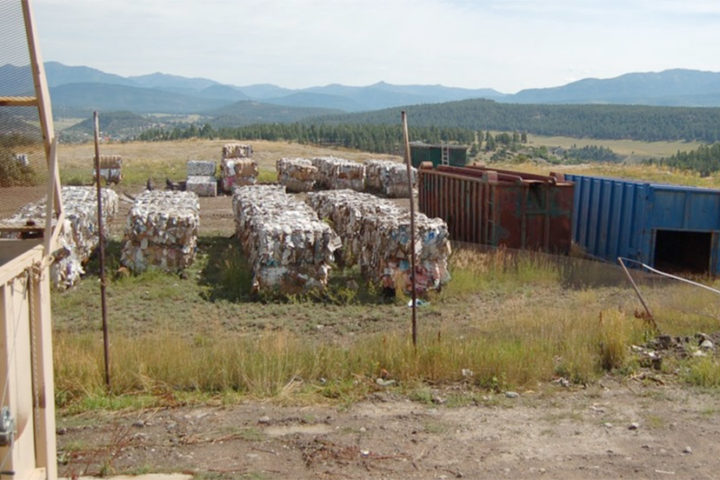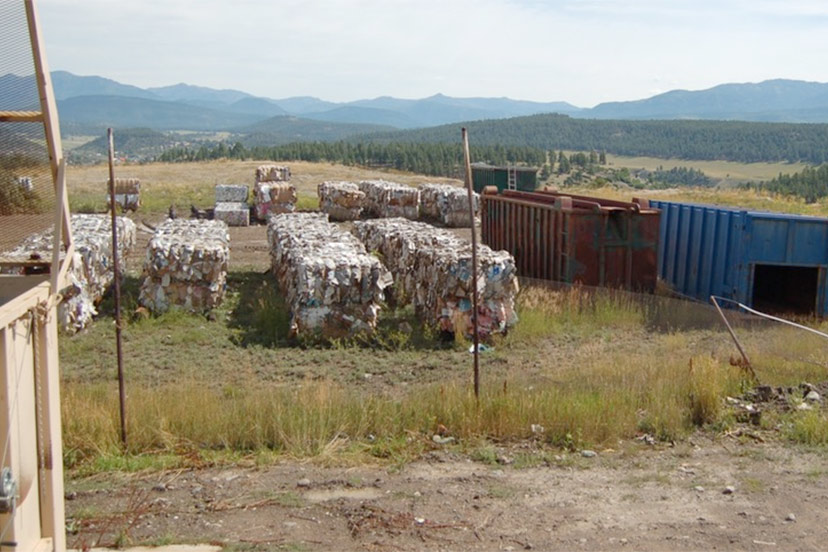EDITOR’S NOTE: This article was updated on May 17 to clarify that the comment about local waste haulers dumping ‘recycled’ materials at the Archuleta County Landfill was made by County Manager Derek Woodman. Mr. Woodman did not specify which local haulers he was referring to. A letter from local company Elite Recycling and Disposal (which you can read here) explains that Elite does, in fact, recycle all the material they collect, through a recycling center.
The Archuleta County Solid Waste Department — which operates the County dump located seven miles down Trujillo Road, as well as two ‘transfer stations’ — appears to be in a rather dire situation, even if we ignore the (for the moment) possible penalty fines that might be assessed as a result of a recent state inspection.
Governments generally prefers the term, “landfill” to the word “dump”, so I’ve been trying to use that preferred appellation. But we all know what is really happening. We’re dumping stuff we don’t want, in a place where we hope no one will see it — or, if they do see it, we hope they won’t pay it any attention.
Then, we cover it with dirt… both as a practical matter, and also to try and hide it.
Maybe we’re ashamed of our waste? Or maybe it’s a state requirement? If you want to understand more about the regulations governing the operation of a landfill in Colorado, you can view a 499-page document here.
In Part Two, I quoted SEH consultant Julie Linn, Senior Scientist II, sharing her thoughts with the Board of County Commissioners during the Tuesday, May 10, BOCC work session.
She mentions, “These numbers, down here.” She is referring to a sheet of numbers that estimate the amount of ‘greenhouse gases’ generated by the Archuleta County Landfill. This is a measurement often used by the folks looking into landfill operations. Household waste tends to emit methane, a powerful greenhouse gas. But waste from construction and demolition generates very little in the way of methane.
According to Ms. Linn, about half of the waste dumped at the landfill last year was ‘C&D’ waste. That’s a huge problem that we’ll touch on in a moment.
Here’s Ms. Linn, again — because her analysis of the situation seems crucial:
“These numbers, down here — the last few years, 2020 and 2021 — they do not include what we call ‘C&D’. Construction and demolition debris. So these numbers are actually low. Most landfills segregate out construction and demolition. And with you guys now, everything goes into the same pit… so you’re taking the really valuable air-space — that’s what you sell and buy at a landfill, is the air-space — and right now we’re filling it with stuff that really shouldn’t be put in there. Those materials should be diverted…”
“Recycled,” suggested Commissioner Ronnie Maez.
“Correct. Exactly right,” Ms. Linn continued. “Recycled. Chipped down, reused into something else, composted. There’s a lot of different ways we can use that.
“My personal concern for the landfill is, you guys are really running out of space, extremely fast. The cell that we’re working on right now is running out of space extremely quickly and there’s only a small little area left in the southwest corner there, which we still have to design — which we’ll be working on this year, designing that.
“But, I mean, very realistically, you guys have only a couple years left at that location and then you are out of space and… we’re not really sure where else we’re gonna go… It takes about 8 to 10 years to permit a new landfill…”
The various people who have served on the Archuleta County Board of County Commissioners over the past 30 years have all understood that our landfill was going to run out of capacity at some point in the future. In 1994, two local activists, Gene Crabtree and Clifford Lucero, collaborated to promote a recycling program in Archuleta County, based partly around the idea that recycling some of the community’s waste — aluminum, paper, cardboard, glass, plastics — would extend the life of the Trujillo Road landfill. That County-funded recycling program is still operating at the transfer station on Trujillo Road, but it has recently faced a couple of challenging problems.
The biggest challenge might be that, in 2017, China stopped accepting the ‘low quality’ recyclables that the U.S. has been exporting — recyclable materials that were consistently tainted with food and industrial residues. This refusal, known in China as the ‘National Sword’ program, caused the financial bottom to drop put of the recycling industry, because America has never developed its own facilities to recycle the massive quantity of garbage created by our society. As a result, Archuleta County has found it difficult to sell the bales of recyclables that have been sitting for months now at the transfer station. Our relative isolation hasn’t helped the situation.

As a result of these same dynamics, certain local waste haulers who are collecting ‘recyclables’ separately from other trash began dumping the ‘recyclables’ into the landfill, according to County Manager Derek Woodman. This unfortunate development was discussed during last Tuesday’s work session, during a lengthy discussion about how recycling could help address the growing crisis at the County landfill.
In fact, recycling, as a partial solution for a landfill crisis, took up about half of the hour-long discussion. Much of the conversation touched on the idea that glass recycling has become especially problematic, due to the fact that glass tends to be one of the heaviest and bulkiest items to ship from the middle of nowhere — where we live — to a manufacturing or recycling facility, while at the same time offering an almost negligible profit.
This problem has led some communities to look for ways to recycle crushed glass locally, as a landscaping or construction material. The BOCC had a lengthy discussion, three years ago, about the glass recycling problem, which you can read about here.
We introduced today’s editorial with a comment by County Manager Derek Woodman.
“The biggest thing we have to do is slow the volume down…”
Here’s how I see the crisis, in the off chance that someone is listening.
Per Ms. Linn’s comments, the landfill is filling up at an accelerating rate, and we may have only a few years of legal operations left. Archuleta County does not have a plan for a new landfill site. Not a Plan A, nor a Plan B.
But we have the ability to delay how soon the disaster hits us.
Recycling might be a wonderful idea, but would it put even a dent in the problem?

